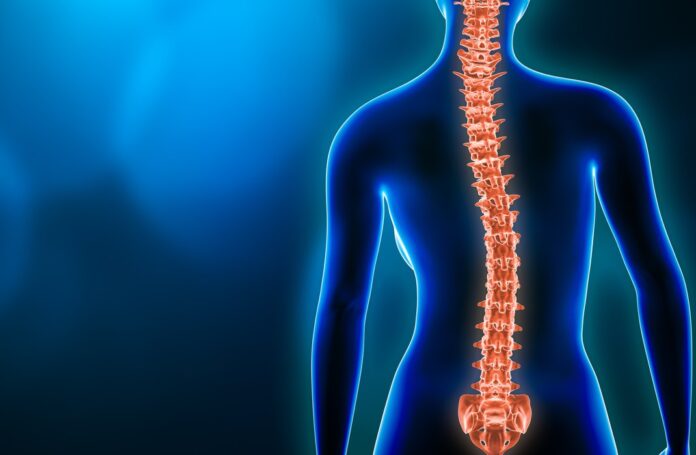Scoliosis has been frustrating for both medical professionals and patients.
Well, is scoliosis a disability? Of course, but not permanent! People find severe back pain and other scoliosis symptoms with this abnormal curvature of the spine.
Is scoliosis a disability, is a common question that arises from the frustration experienced by both medical professionals and patients due to the severe back pain and other symptoms associated with this abnormal curvature of the spine. However, it’s important to note that scoliosis, while challenging, is not a permanent disability.
However, recent research has shed light on an exciting new avenue for combating this condition: the power of movement. With a professional voice and a wealth of information, this article aims to arm readers with the knowledge they need to fight back against scoliosis and embrace the transformative power of movement.
Benefits of Tailored Exercises for Scoliosis
One of the main benefits of tailored exercises for scoliosis is that they improve posture and alignment. Scoliosis often causes the spine to curve, leading to imbalances in the body. Individuals with scoliosis can work towards restoring proper alignment and reducing pain and discomfort by incorporating specific exercises that target these imbalances.
In addition to improving posture, tailored exercises can also help strengthen the muscles surrounding the spine. This increased strength can support the spine, helping to relieve pressure and reduce the risk of further progression of the condition. The power of movement-based therapies in combating scoliosis is an exciting new venue that offers hope for medical professionals and patients alike.
Establishing a Safe and Effective Scoliosis Exercise Regime
By embracing a movement-based approach, individuals with scoliosis can engage in exercises that target the muscles surrounding the spine. With the guidance of a trained professional, a tailored exercise regime can be established to address each patient’s specific needs and the severity of their condition.
Incorporating movement-based therapies into a scoliosis exercise regime has the potential to unlock the power of the body to counteract the effects of this complex condition. This article aims to provide readers with comprehensive information, enabling them to understand the benefits and possibilities of utilising movement-based therapies to treat and manage scoliosis effectively. With a professional voice and evidence-based research, this article seeks to empower individuals with the knowledge required to take control of their scoliosis journey.
How Exercises for Scoliosis Help Improve Quality of Life
One of the main benefits of exercise for scoliosis is improved posture. Scoliosis causes the spine to curve sideways, leading to an irregular body alignment. Exercises that focus on strengthening the core and back muscles can help to realign the spine and correct postural imbalances. With improved posture, individuals with scoliosis may experience reduced pain, increased comfort, and a greater sense of body confidence.
Strengthening exercises target the muscles that support the spine, helping to stabilise and reduce the progression of the curvature. On the other hand, flexibility exercises help improve the range of motion and reduce muscle tension, which can alleviate pain and stiffness associated with scoliosis. By improving strength and flexibility, individuals with scoliosis can participate in their daily activities more comfortably and maintain higher independence.
By addressing the physical limitations and discomfort associated with scoliosis, these exercises empower individuals to take control of their health and well-being. It is important to note that individualised exercise programs should be developed in consultation with healthcare professionals or certified therapists to ensure the safety and effectiveness of those exercises for each individual’s specific needs.
Read Also
- Why the Keto Diet Works for Some People—and Fails Dramatically for Others: An Ayurvedic Breakdown for Modern HealthcareThe keto diet has dominated weight-loss culture for years. For some people, it produces rapid fat loss, stable energy, and improved mental clarity. For others—especially those who gain weight easily—it leads to burnout, digestive distress, rebound weight gain, high cholesterol, and a metabolism that feels slower than before. Healthcare often frames this as a discipline… Read more: Why the Keto Diet Works for Some People—and Fails Dramatically for Others: An Ayurvedic Breakdown for Modern Healthcare
- How to Choose the Best Assisted Living Facility for SeniorsAre you looking for the right assisted living facility for a senior loved one? Choosing a place can feel overwhelming. There are many factors to consider, from care services to the environment. Safety, comfort, and social opportunities play important roles in daily life. Each senior has unique needs and preferences that must be met. Understanding… Read more: How to Choose the Best Assisted Living Facility for Seniors
- Burn Smart, Not Hard; Shape Burn: Clean Protein for Weight ManagementYou want to feel light, strong, and confident. You don’t want crash diets or fake promises. You need a plan that works with your body, not against it. That’s where Shape Burn comes in. You can burn fat without losing strength. You can eat better and stay full. You can manage weight in a way… Read more: Burn Smart, Not Hard; Shape Burn: Clean Protein for Weight Management
- Creatine Basics: How Much Is 5g, How Much Water You Need, and Whether Pills or Powder Work BetterIf you’ve ever walked into a supplement aisle or scrolled through fitness TikTok, you’ve probably seen people talking about creatine — usually with a shaker bottle in hand and promises of better workouts and faster gains. And honestly? They’re not wrong. Creatine is one of the most researched and effective supplements for muscle strength, recovery,… Read more: Creatine Basics: How Much Is 5g, How Much Water You Need, and Whether Pills or Powder Work Better
- Understanding Breast Cancer in Men: Key Facts and SymptomsBreast cancer is often thought of as a disease that only affects women. However, men can develop it too. Although it is less common, early detection and awareness are important. Read on to learn key facts, symptoms, and ways men can take action to protect their health. How Common Is Breast Cancer in Men? Breast… Read more: Understanding Breast Cancer in Men: Key Facts and Symptoms
- Raising Awareness: Breast Cancer Facts for Older MenBreast cancer does not affect only women, and many older men do not realize they are at risk. Because the signs can be easy to miss, many men learn about the disease only when it has progressed. Learning the basic facts now can help you stay aware and respond early. If you want to protect… Read more: Raising Awareness: Breast Cancer Facts for Older Men







